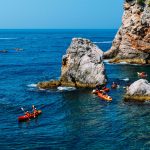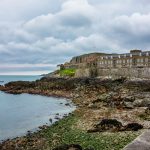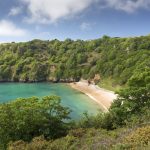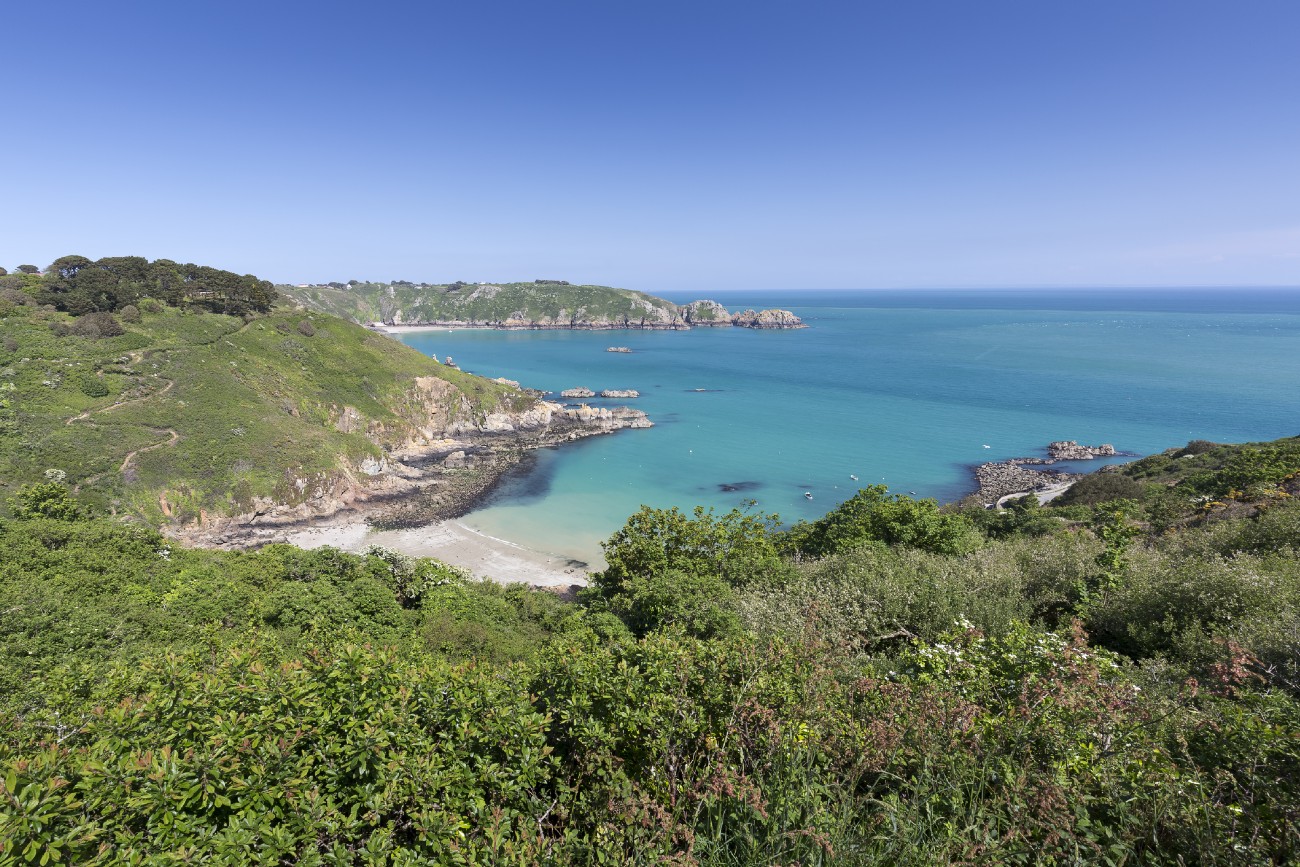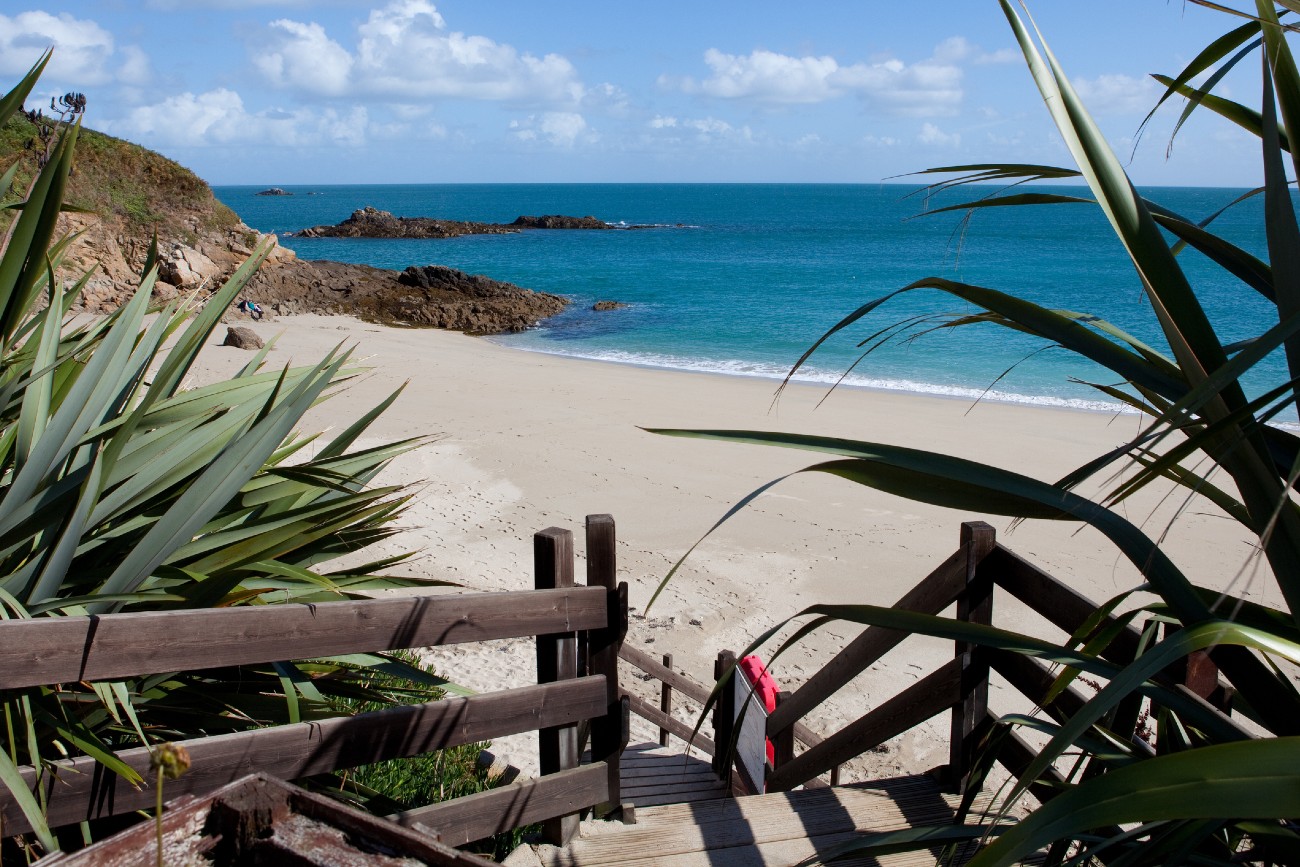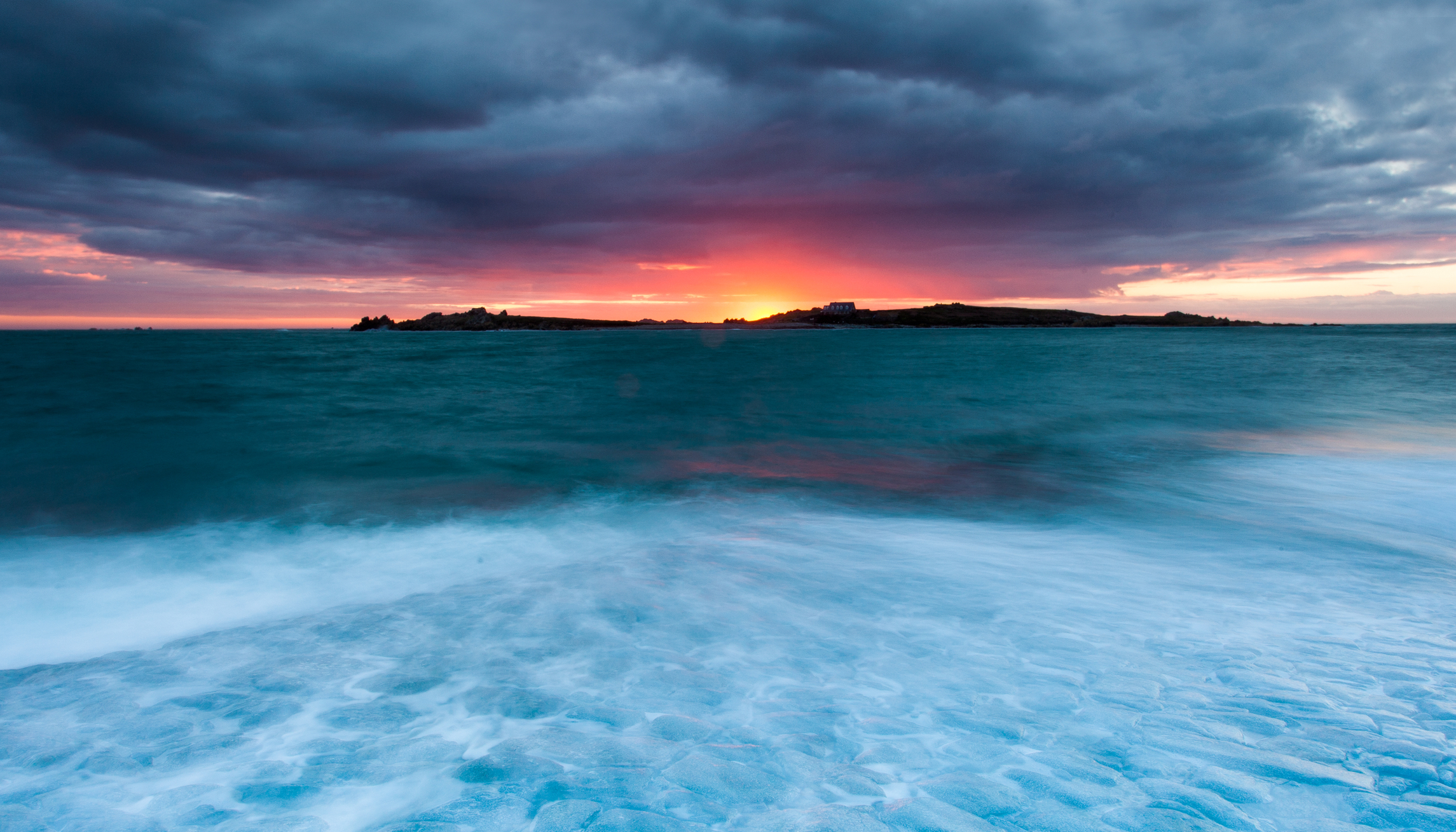
South-West Guernsey is an area rich in natural scenery, so much so that it has inspired writers and artists throughout history.
Most notably, the area was loved by the celebrated French author Victor Hugo, who lived on the island for many years. The south-west coastline is well known for its picturesque landscape, and incorporates the headlands of Pleinmont and L’eree, as well as several bays and the small island of Lihou.
Pleinmont Headland stands at one of the highest points on Guernsey and it therefore offers some outstanding views of the surrounding landscape.
Being the most westerly point on the Channel Islands, the rocks just offshore are home to Hanois Lighthouse, a 33 metre high structure that was built in 1862 to warn approaching ships of the dangerous rocks around the coast.
Area Around Pleimont Headland
A well-maintained footpath traverses Pleinmont Headland and leads northwards towards the bays of Rocquaine and L’eree. The beaches here are great for swimming and the azure colour of the sea on sunny days makes them idyllic spots to visit.
The north end of L’eree bay meets L’eree Headland, arguably one of the most interesting places to visit on the south-west coast.
The headland is the site of two adjacent nature reserves – La Claire Mare and Colin Best. Here I discovered extensive areas of reedbed, saltmarsh and orchid meadows, all of which are important habitats for rare species, including Oystercatchers and Ringed Plovers.
A visit to the headland here will also reward you with views of Lihou Island, which lies just offshore and is accessible at low tide via a narrow stone causeway.
The island is another important area for conservation and has been designated as a Ramsar Wetland Site for the preservation of rare birds.
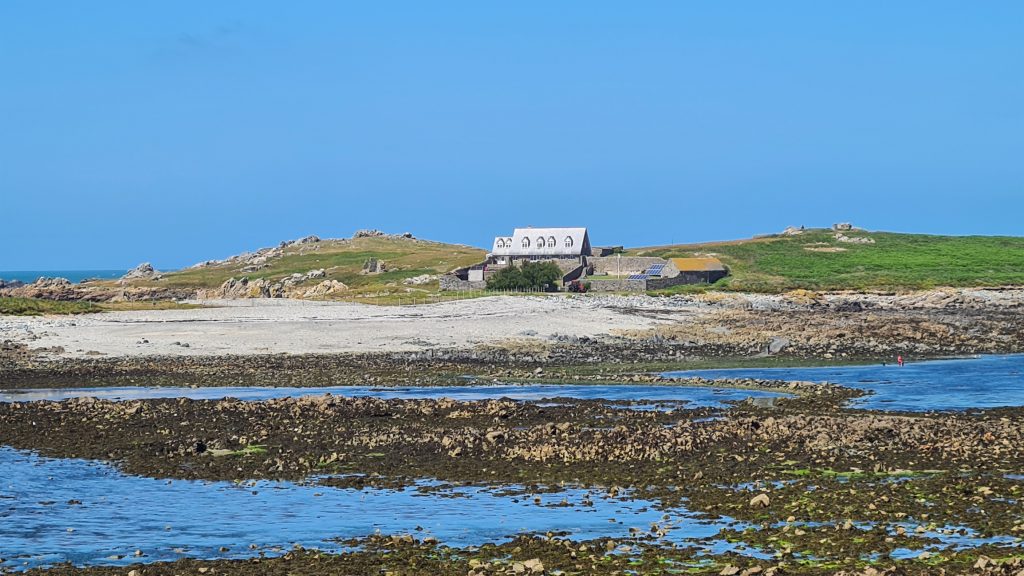
Lihou Island, Guernsey Channel Islands
History At Every Turn
I think that one of the things that makes the south-west coast of Guernsey such an interesting place to visit is the heritage.
The landscape is peppered with historical sites and Pleinmont Headland in particular is a goldmine for culture.
Its elevation above the sea made it a prime lookout point for German forces during WWII and the result was the construction of a large naval observation tower. This was a key part of the Nazi sea defence system during their occupation of the Channel Islands and the tower is a unique structure, built over five storeys.
Being open to the public on certain days of the week, it can be an intriguing place to visit.
South-west Guernsey is also a place which is steeped in folklore, with fairies being a common feature of many local stories.
The north tip of Pleinmont Headland is the site of a mysterious landmark which goes by the name of Tables des Pions.
It’s also known affectionately as the Fairy Ring, and is formed of a ring of stones and a shallow, circular trench. While folklore tells of fairies gathering at the site, it is actually thought to be a 300 year old example of a picnic bench.
You can continue your fairytale visit to the south-west coast with a trip to L’eree Headland.
This is a large tomb which is thousands of years old and is one of the best examples of a Neolithic chamber tomb. The entrance to the grave is always open and is well worth a look, although as it’s said to be the entrance to Guernsey’s fairy kingdom, you may want to watch out for unusual sights.
A Need For Speed
The remote coastline of Guernsey’s south-west is a great place to find wildlife and it always pays to be on the lookout in the area.
When walking the coast path around Pleinmont Headland, you might by lucky enough to hear the piercing cry of one of the world’s most impressive birds.
The Peregrine Falcon is only present on Guernsey in small numbers but the species is a lover of tall sea cliffs like the ones on the southern coast, making this area one of the best places on the island to see one.
The Peregrine is undoubtedly the king of speed amongst the animal kingdom, able to dive at speeds of almost 250 miles per hour.
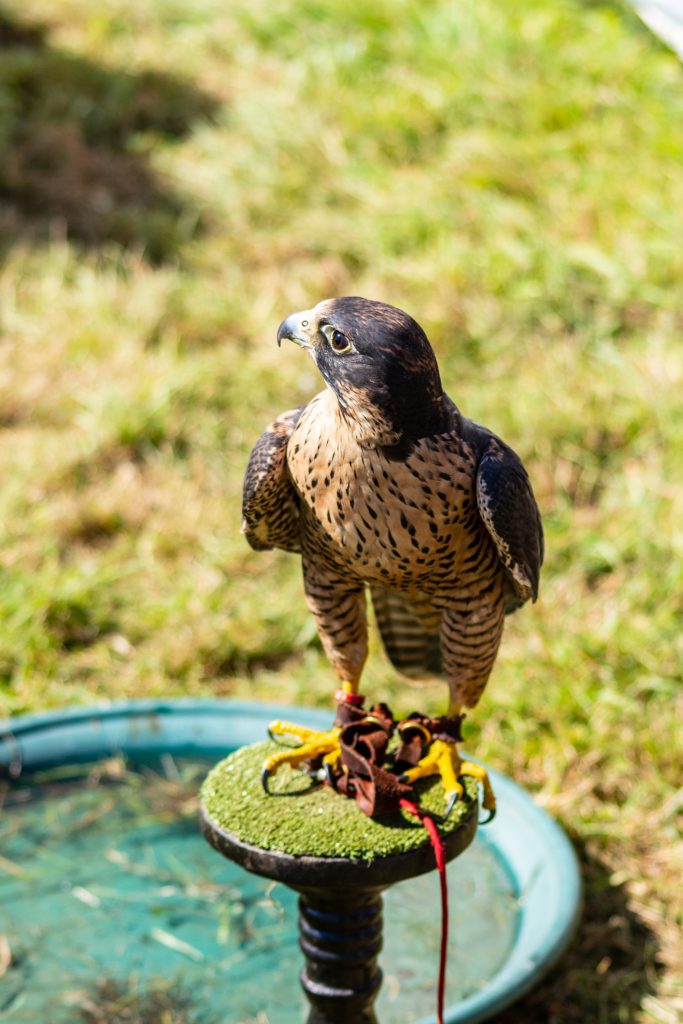
Peregrine Falcon, Island of Guernsey
This incredible ability in the air makes the Peregrine a fearsome hunter, able to take prey completely by surprise and deliver blows with such force that the victims are often knocked out cold.
The Peregrine population fell dramatically in the last century across the UK and Channel Island region, largely due to persecution. Thankfully, Peregrines have since made a substantial recovery, and there are chances to see this bird of prey here and it can be a real highlight on a trip to the coast.
South-west Guernsey is therefore a great place to visit for outdoor-lovers. With easy-going cliff walks, sandy beaches and plenty of sights to see, the area represents some of the best of what Guernsey has to offer.
After the exploring the south-west part of Guernsey Island, you will probably get hungry so don’t forget to check out Discovering the mouthwatering cuisine of Guernsey.


